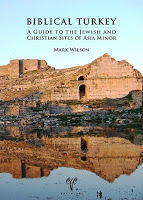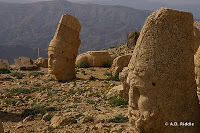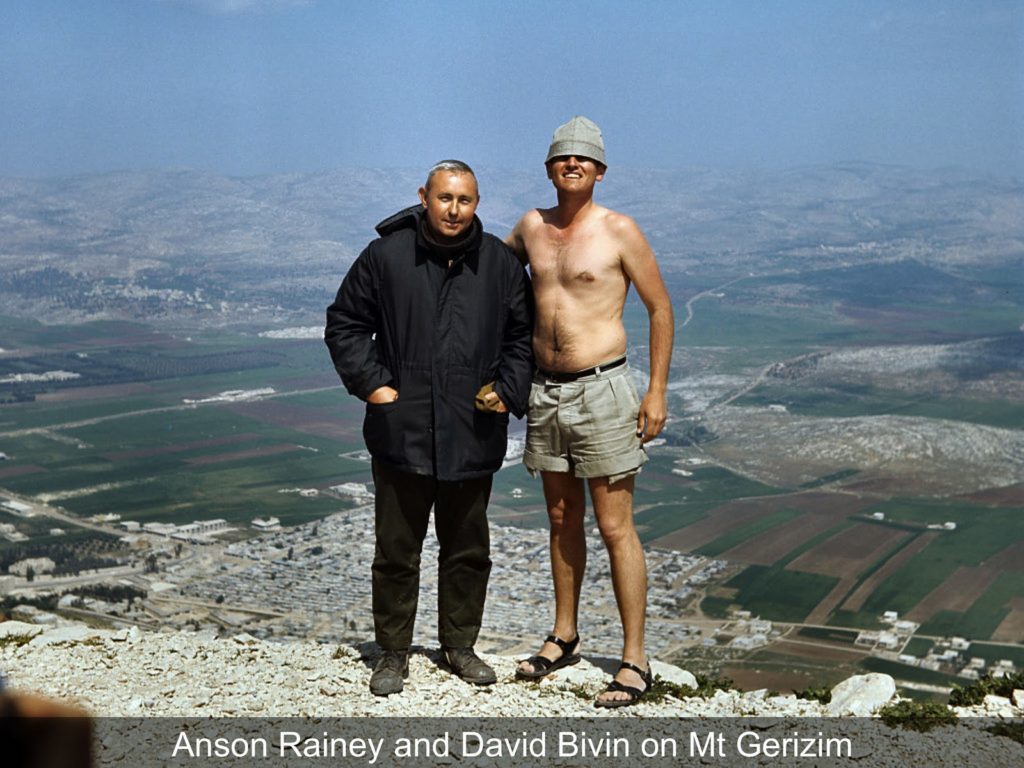 About four months ago, Todd announced the publication of a new guidebook for Turkey entitled Biblical Turkey: A Guide to Jewish and Christian Sites of Asia Minor, by Mark Wilson (Ege Yayınları, 2010). What prompts this review is the news that the book can now be ordered from Amazon.com and sells for $39.95.
About four months ago, Todd announced the publication of a new guidebook for Turkey entitled Biblical Turkey: A Guide to Jewish and Christian Sites of Asia Minor, by Mark Wilson (Ege Yayınları, 2010). What prompts this review is the news that the book can now be ordered from Amazon.com and sells for $39.95.
Biblical Turkey is not a guidebook like Lonely Planet or Rough Guide—it does not tell you where to find accommodations or the best places for affordable dining. What Biblical Turkey does do, however, is give you just about all the archaeological and historical information you will need for numerous sites in Turkey. The book includes every well-known and lesser-known site which is mentioned in the Bible, but it includes much more than that. As such, this is rich resource, whether you travel to Turkey or not (though, I recommend that you take a trip at some point).
What sets this book apart from A Guide to Biblical Sites in Greece and Turkey, by Fant and Reddish (Oxford Univ. Press, 2003), is its comprehensiveness. Fant and Reddish did not include a number of sites that are mentioned in the Bible, such as Cnidus, Carchemish, and Harran. Wilson includes all of these as well as many other important archeological sites which are not mentioned in the Bible, such as Van Kalesi (ancient Tushpa, the capital of Urartu), Gordium (the capital of Phrygia), Kanesh/Kültepe (the Old Assyrian trading colony), and Nemrut Dağ (the mausoleum of Antiochus I of Commagene).
 Nemrut Dağ west terrace, toppled heads from colossal statues.
Nemrut Dağ west terrace, toppled heads from colossal statues.
Biblical Turkey is organized by five regions, beginning in eastern Turkey and working westwards. Each chapter begins with historical and geographic descriptions of ancient regions and provinces (e.g., Cappadocia, Galatia) and then covers the ancient cities within that region. For each region and city, biblical references are listed, a historical summary is given, and the relevant inscriptions and archaeological remains are described. Though written in a non-technical style, the text betrays a depth of technical knowledge in these areas which is quite impressive. Nearly every two-page spread is graced with a carefully selected photograph of the site, an architectural element, or an inscription, which is helpful for understanding the text. Finally, for many sites, Wilson provides a title or two for “further reading.” Most of the titles he suggests are guides available at the site itself, often written by the archaeologists, and published in Turkey. These can be difficult to obtain, but it is helpful nevertheless to have this information. (For those who are desperate enough to pay the stiff shipping charges, many of the titles can probably be purchased at Zero Books.)
I find several other features of Biblical Turkey helpful. The Turkish names are provided alongside the more common English names which facilitates navigating by maps and road signs. The book is also generously furnished with site plans and sidebars. The sidebars come in three types: “side trip” boxes provide brief descriptions of lesser-known sites you may want to add to your trip if you have spare time, “in-site” boxes give more background detail (e.g., a New Testament timeline, the seven ecumenical councils, or ancient travel on the Mediterranean), and “ancient voice” boxes discuss ancient textual sources in greater detail.
Maybe I’m gushing now, but I wish all guidebooks were written like this one. A lot of thought and research went into the content and its organization. Turkey is a vast country with many fascinating things to see and study. With this book in hand, no longer will so much of it go unnoticed.
FURTHER NOTE: Mark Wilson is the director of Seven Churches Network and Asia Minor Research Center. You can read more about Mark here. Leen Ritmeyer reviewed and recommended the book here.


